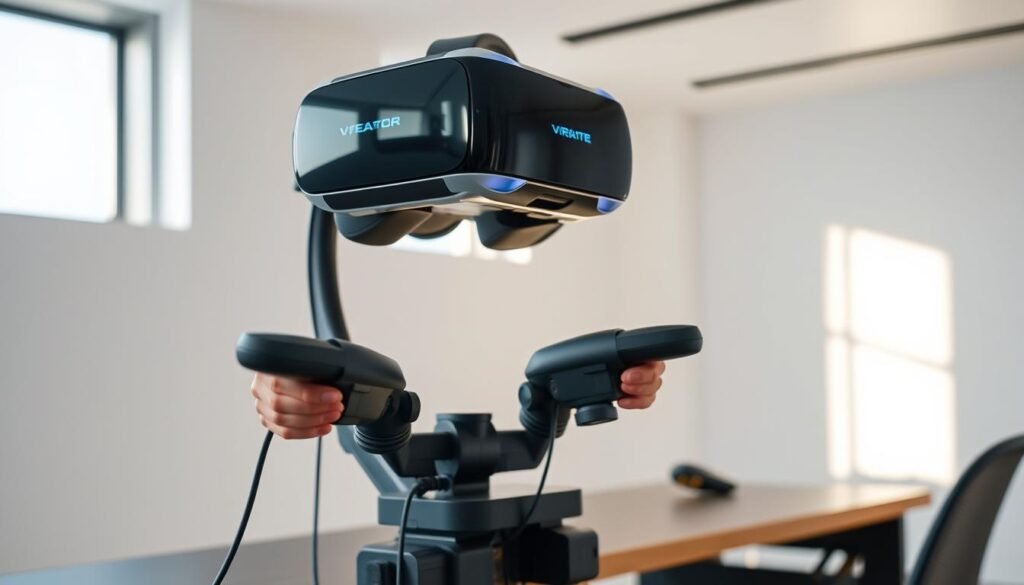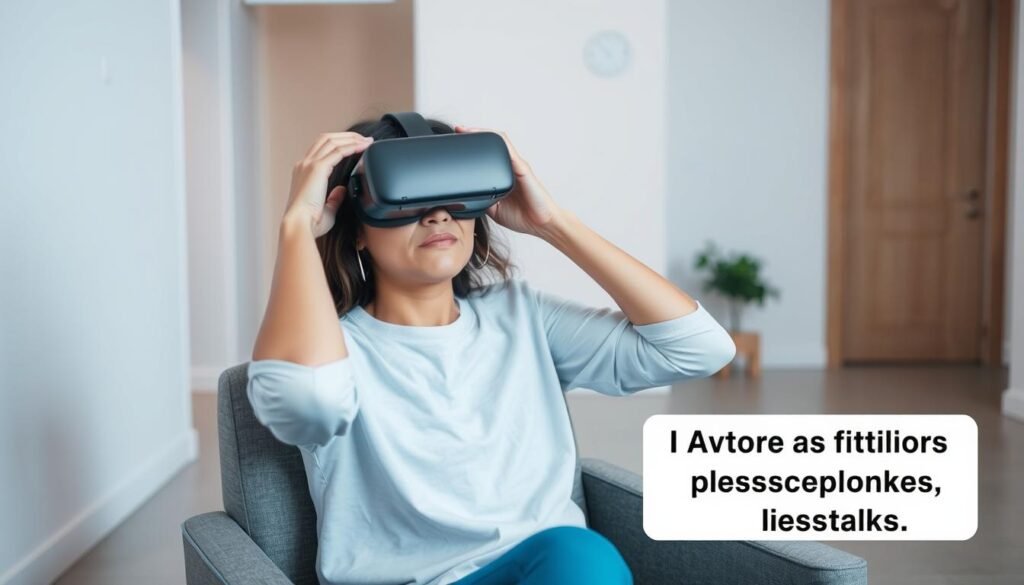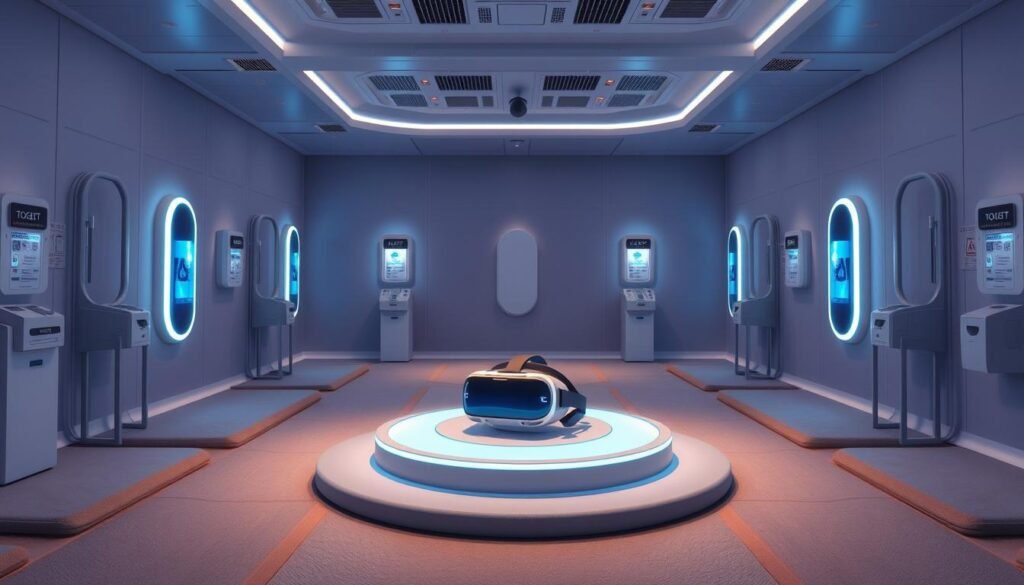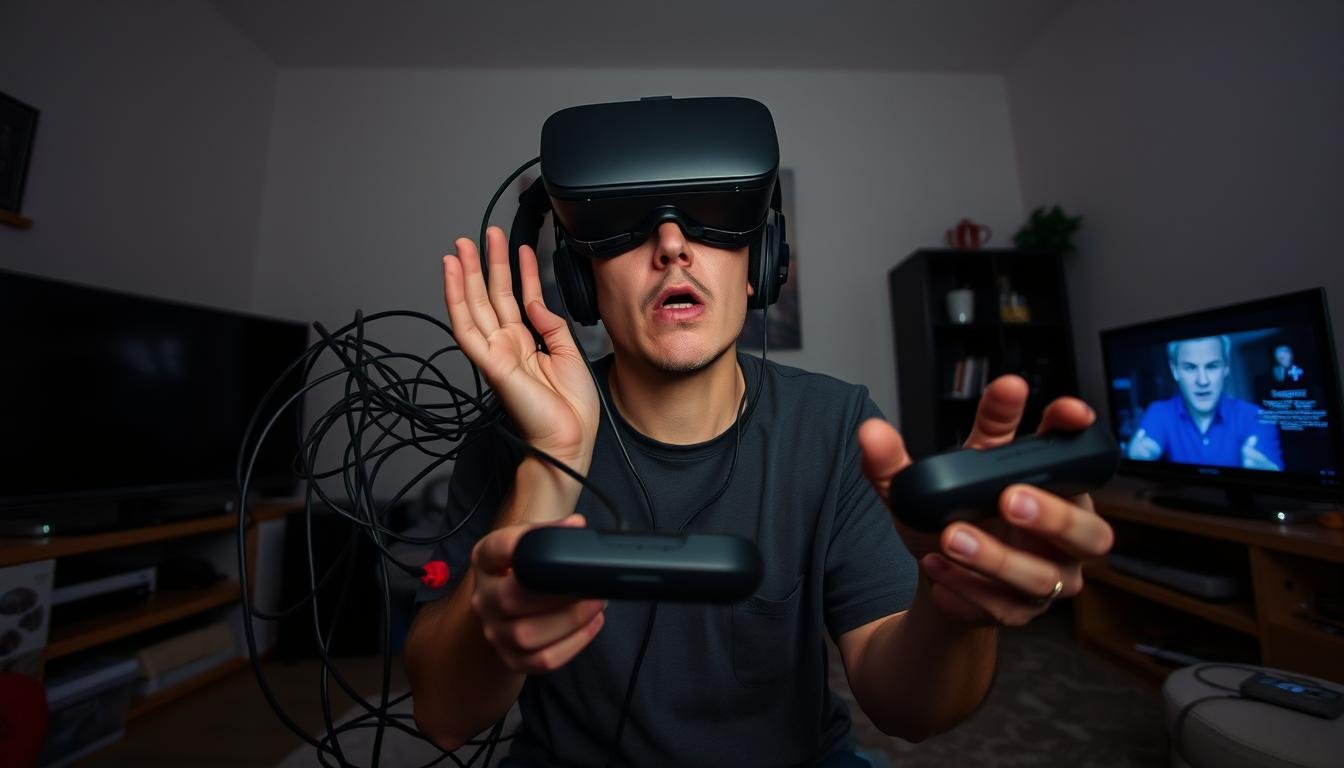Did you know that over 60% of first-time VR users report discomfort or frustration due to improper setup? Virtual reality can be an incredible way to immerse yourself in a new world, but small errors can quickly turn excitement into disappointment.
One of the most critical aspects of a great VR experience is ensuring your headset fits correctly. A poorly adjusted headset can lead to discomfort, blurry visuals, and even headaches. Taking the time to calibrate your device properly can make all the difference.
Another common issue is mismanaging motion. Moving too quickly or ignoring alignment settings can disrupt your gameplay and reduce the fun. By understanding these pitfalls, you can focus on enjoying the game rather than troubleshooting.
This article will guide you through the most frequent mistakes and provide expert tips to help you get the most out of your VR experience. Whether you’re playing for fun or exploring new worlds, these insights will ensure your mind stays fully engaged.
Key Takeaways
- Proper headset fit is essential for comfort and clarity.
- Calibration ensures a smoother and more enjoyable experience.
- Managing motion correctly prevents gameplay disruptions.
- Understanding common errors enhances your overall immersion.
- Expert tips can help you avoid frustration and maximise fun.
The Exciting World of Virtual Reality
Step into a world where reality blends seamlessly with imagination. Virtual reality has revolutionised how we interact with digital environments, offering experiences that captivate the mind and senses. From gaming to educational applications, this technology continues to push boundaries.
Embracing Immersive Technology
Immersive technology is at the heart of virtual reality. It creates a sense of presence, making you feel as though you’re truly part of the digital world. Advanced features like motion tracking and 3D audio enhance this experience, ensuring every movement feels natural.
One of the most exciting aspects is how VR caters to diverse needs. Whether you’re exploring a virtual game world or using it for professional training, the possibilities are endless. The technology adapts to your preferences, making it accessible for everyone.
Exploring Diverse VR Headset Options
Choosing the right headset is crucial for a seamless experience. Devices like the Oculus Quest 2 and Valve Index offer unique features tailored to different users. For instance, the Oculus Quest 2 is known for its wireless design, while the Valve Index excels in precision and comfort.
Here’s a quick comparison of popular VR headsets:
| Headset | Key Features | Best For |
|---|---|---|
| Oculus Quest 2 | Wireless, lightweight, affordable | Casual users and gamers |
| Valve Index | High refresh rate, precise tracking | Enthusiasts and professionals |
| HTC Vive Pro 2 | High resolution, modular design | Enterprise and advanced users |
When selecting a headset, consider factors like comfort, resolution, and compatibility. A well-fitted device ensures your head and eyes remain comfortable during extended use.
“Virtual reality is not just a technology; it’s a gateway to new experiences and perspectives.”
By understanding the features and benefits of each option, you can find the perfect match for your needs. Dive into the world of virtual reality and discover how it can transform your game or professional application.
Essential Setup and Calibration Tips

Proper setup and calibration are key to unlocking the full potential of your device. Whether you’re diving into a game or exploring a virtual world, these steps ensure your experience is smooth and immersive.
Proper Headset Fitting and Adjustment
A well-fitted headset is crucial for comfort and clarity. Start by adjusting the straps to ensure the device sits snugly on your head without causing pressure. Many headsets feature ergonomic designs, so take advantage of these to find the perfect fit.
Pay attention to the position of the lenses. They should align with your eyes to prevent blurry visuals. If your headset includes adjustable IPD (interpupillary distance), tweak this setting to match your eye spacing. This small adjustment can significantly enhance your comfort and visual accuracy.
Accurate Calibration for Optimal Performance
Calibration is the backbone of a seamless virtual reality experience. Begin by setting up your play area. Ensure the room is well-lit and free of obstructions to avoid tracking errors. Most software includes a setup wizard to guide you through this process.
Next, adjust the settings to minimise latency and improve clarity. High refresh rates and precise tracking are essential for smooth movement. If you’re building a custom PC for VR, ensure your hardware meets the recommended specifications for optimal performance.
“A well-calibrated system ensures your virtual adventures feel seamless and natural.”
Finally, test your setup by moving around the play area. Ensure the headset tracks your motion accurately. If you notice any lag or misalignment, revisit the calibration steps. A properly calibrated system not only enhances your experience but also ensures safety during extended sessions.
For more tips on building a custom PC tailored for VR, check out this guide.
Avoiding Common VR Beginner Mistakes

Navigating the immersive world of virtual reality can be thrilling, but small missteps can dampen the experience. From managing motion sickness to ensuring your equipment is safe and budget-friendly, a few adjustments can make all the difference.
Managing Motion Sickness Effectively
Motion sickness is a frequent issue for newcomers. Overexposure to rapid movements in a virtual reality environment can lead to discomfort. To avoid this, start with shorter sessions and gradually increase your playtime as your body adapts.
Recognising early signs of nausea is crucial. If you feel dizzy or uneasy, take a break immediately. Adjusting the settings to reduce motion blur and increasing the refresh rate can also help. Devices like the Meta Quest 3S, with its 90-120Hz refresh rate, are excellent for minimising this issue.
- Begin with slow-paced games to acclimatise your senses.
- Use a fan to maintain airflow and reduce feelings of disorientation.
- Take regular breaks to rest your eyes and regain balance.
Budget and Equipment Safety Considerations
Investing in virtual reality gear doesn’t have to break the bank. Budget-friendly options like the Atlasonix VR Headset, priced under $50, offer a great entry point. However, ensure your choice meets safety standards and provides a comfortable fit.
When setting up your play area, clear any hazards to prevent accidents. Proper calibration of your device ensures smooth tracking and reduces strain. For more insights on avoiding common errors in VR training, explore this detailed guide.
“A well-prepared setup not only enhances your experience but also safeguards your physical wellbeing.”
Finally, consider the long-term costs. While standalone headsets like the Meta Quest 3S are affordable, ensure you factor in accessories and potential upgrades. By balancing budget and safety, you can enjoy your virtual reality journey without unnecessary risks.
Preventing Motion Sickness and Maintaining Comfort

Motion sickness can quickly turn an exciting virtual experience into an uncomfortable ordeal. Fortunately, with a few adjustments, you can minimise discomfort and enjoy your time in the virtual world.
Adjusting Settings to Minimise Discomfort
One of the most effective ways to reduce motion sickness is by tweaking your headset settings. Start by increasing the refresh rate, as a higher rate can make movement feel smoother and more natural. This small change can significantly enhance your comfort.
Another important setting is the field of view (FOV). Narrowing the FOV slightly can help reduce the feeling of disorientation. Additionally, enabling motion blur reduction can make the visuals clearer, further preventing nausea.
- Increase the refresh rate for smoother movement.
- Adjust the field of view to reduce disorientation.
- Enable motion blur reduction for clearer visuals.
Recognising Your Personal Limits
Everyone’s tolerance for virtual reality is different. It’s essential to recognise your personal limits to avoid pushing yourself too far. Start with shorter sessions and gradually increase your playtime as your body adapts.
Pay attention to early signs of discomfort, such as dizziness or unease. If you feel any of these symptoms, take a break immediately. Regular breaks not only prevent motion sickness but also help maintain your overall comfort during extended use.
“Listening to your body is key to enjoying virtual reality without discomfort.”
For more detailed advice on managing motion sickness, check out these VR motion sickness safety tips.
Optimising Your VR Space for Safety and Hygiene

Creating a safe and clean environment for your virtual adventures is essential for both enjoyment and wellbeing. Whether you’re diving into a game or exploring new worlds, a well-prepared space ensures you can focus on the experience without distractions or risks.
Clearing Your Play Area of Hazards
Before starting, take a moment to assess your room. Remove any obstacles like furniture, cables, or loose objects that could cause accidents. A clear play area not only enhances safety but also allows for smoother movement and tracking.
Ensure the environment is well-lit and free from reflective surfaces that might interfere with your headset’s sensors. Marking the boundaries of your play area with tape or virtual walls can help you stay within safe limits.
Regular Cleaning and Maintenance of Equipment
Keeping your headset and controllers clean is crucial for hygiene and longevity. Sweat and bacteria can build up over time, so wipe down the equipment with nonabrasive disinfectant wipes after each use. Pay special attention to the facial interface, as it comes into direct contact with your skin.
For a deeper clean, follow a systematic routine. Remove detachable parts like face pads and wash them according to the manufacturer’s instructions. Regularly check for wear and tear, and replace any damaged components to maintain comfort and performance.
“Proper sanitisation not only protects your health but also extends the life of your equipment.”
For detailed guidance on sanitising your gear, refer to this comprehensive guide. By prioritising safety and hygiene, you can enjoy a seamless and worry-free virtual reality experience.
Enhancing Your VR Experience Through Breaks and Social Interaction

Balancing your virtual activities with regular breaks can significantly enhance your overall enjoyment. Whether you’re exploring a new game or diving into an immersive experience, taking time to pause ensures you stay refreshed and focused.
Taking Regular Breaks for Wellness
Extended sessions can lead to fatigue, both physically and mentally. To maintain high levels of concentration, follow the 20-20-20 rule: after every 20 minutes, look at an object 20 feet away for 20 seconds. This simple habit reduces eye strain and keeps you comfortable.
Regular breaks also help prevent motion sickness, a common issue for beginners. By stepping away periodically, you give your body time to adjust, ensuring a smoother and more enjoyable experience.
Engaging in Social VR for a Richer Experience
Social interaction adds a new layer of depth to your virtual adventures. Multiplayer games and virtual social platforms allow you to connect with others, transforming solitary activities into shared memories. This not only enhances fun but also provides opportunities to learn new tips and tricks from fellow users.
Exploring different applications can further enrich your environment. From collaborative projects to virtual meetups, there’s an option for every interest. Sharing your journey with others can boost motivation and make your play sessions more rewarding.
“Social connectivity in virtual spaces fosters collaboration and creativity, making every session more meaningful.”
By integrating breaks and embracing social interaction, you can create a well-rounded and sustainable virtual experience. Whether you’re a beginner or a seasoned user, these strategies ensure you get the most out of your time in the virtual world.
FAQ
How can I reduce motion sickness in virtual reality?
What should I consider when setting up my VR space?
How do I choose the right VR headset?
Why is calibration important for VR?
How often should I take breaks while using VR?
Can I use VR for social interactions?
What safety measures should I follow in VR?
How do I maintain my VR equipment?
Source Links
- The Ultimate Beginner’s Guide to Sony Playstation 2
- The Best VR Games for 2025 – Digital Gravity
- How to leverage virtual reality (VR) to build equity in education
- XReadyLab.com | Best VR education | Free 3D models | Science | Tools for teachers | VR classroom How VR Can Enhance Critical Thinking and Creativity in STEM %
- Keypoint Annotation: Essential Tips for ML Teams
- Measuring plasma membrane fluidity using confocal microscopy – Nature Protocols
- Development of New Generation Portable Camera-Aided Surgical Simulator for Cognitive Training in Laparoscopic Cholecystectomy
- The Best Budget VR Headsets – IGN
- The Best Virtual Reality Tools for Showcasing NGO Impact to Donors – fundsforNGOs
- Does Mindfulness Mediated by Virtual Reality Help People with Functional Diversity?
- Geometry Aware Passthrough Mitigates Cybersickness
- Frontiers | Practical considerations of clinical XR (AR/VR) deployments
- Social presence in shared virtual reality experience among older adults – Virtual Reality
- Design and evaluation of children’s education interactive learning system based on human computer interaction technology – Scientific Reports
- Virtual Reality Injuries – What You Need to Know
- XReadyLab.com | Best VR education | Free 3D models | Science | Tools for teachers | VR classroom The Intersection of VR and AI in the Future of School Education %
- Manual: VR and MR development in Unity
- Parent’s guide to VR headsets and VR games for kids
- UX Strategy as the Foundation for Building a Winning VR Product
- How to screen record in Virtual Reality
